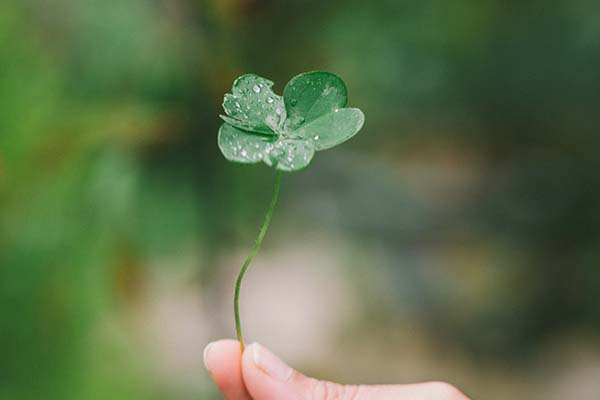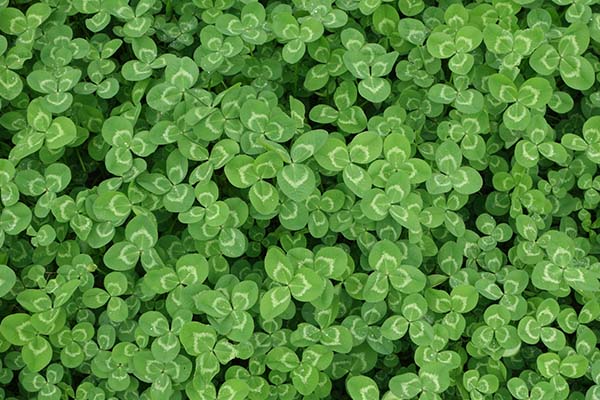When to plant clover? The best time to plant clover is in spring. Wait until temperatures reach between 35 and 45 degrees Fahrenheit during the night. Clover needs plenty of water during its early days, so plant the seeds in springtime. In utmost regions, this will be around April to May.
Planting Clover In Different Climates
As a hardy plant available in numerous species, you’ll find a clover variety for any planting conditions.
The first step to having a clover lawn is figuring out which species will grow in your area.
Generally speaking, this will depend on the climate your region has. For Hardiness Zones 3 through 10, you’ll find it easy to plant perennial clover. Compared to perennial clover, annual clover prefers warm, temperate climates.
As such, your stylish bet is to plant periodic clover seeds in areas where winters are considered mild.
Again, these are hardy plants, so they can survive in utmost soils and in areas that receive partial shade to full sun. It’s stylish to plant them in spring, but you can also start the seeds in early summer. The key is to stay for the ground to come moist and soft enough because of the spring rains.
In some locations, you can indeed plant clover seeds as late as September or early October.
Choosing Clover Seeds
Before you can begin growing clover, you ought to first discern the species that will thrive in your area.
Some clover varieties have staggering tolerance to intense climate and soil conditions, while others don’t.
In general, you can pick from two sorts of clover: annual and perennial.
ANNUAL CLOVERS
Annual clovers have a lifestyle cycle of just one year. This potential they grow from seeds, produce new seeds, and sooner or later die, all within 12 months.
So, if you decide to grow an annual clover, anticipate your clover lawn to require reseeding in one year. The only way to reproduce annual clovers is through their seeds.
Unfortunately, you might word delayed germination in newly produced annual clover seeds. This is due to the seeds’ coating, which wants time to smash down so that moisture can enter the seed.

How To Plant Clover Seeds
As mentioned, clover is one of the most common grass alternatives.
You’ll find it veritably simple to grow, easy to maintain, tolerant of failure, and most importantly, affordable.
Clover lawns need veritably little care and nearly no mowing. They also attract notions, helping with pollination.
Still, that’s what you need to do if you decide to grow these in your yard.
Step 1 Getting The Soil Ready
Planting clover seeds bears some preparation. This way, you can be sure you’re giving them the stylish chance to thrive.
Test The Soil
Doing this is veritably important, as it’ll determine if you have the kind of soil that will allow your clover to grow. Naturally, you’ll want to do this six months in advance so that you have enough time to make any necessary adjustments.
Most clover kinds thrive in soil with a ApH of6.0 up to7.0. Some species might prefer soil with an 8.5 pH rating. Away from determining soil pH, a testing kit also identifies mineral and nutrient deficiencies in your soil.
Make Adjustments
For a soil pH that’s too low, add lime. For a soil pH that’s too high, blend in sawdust or peat moss. After making the adjustments, stay for at least six months before planting your clover seeds.
Treat The Area With Weed Killer
Check for any unwanted plants or weeds growing on your lawn. Still, the simplest way to treat the area is to use a weed killer, if you find any.
Some weed killers will tell you to stay for 10 to 14 days before you can plant the seeds.
Be sure to follow the directions stated in the packets.
Till The Soil
Do this one month before you plant your clover seeds to allow any left-over weeds to reappear. While clover seeds can grow with weeds, it’s still stylish if it has no competition to the nutrients available in the soil.
This is especially true in the beginning when it’s still establishing its root system. You’ll want to till the soil to about 20- centimeters deep and remove rocks, debris, and other vegetation in the area.
Water The Lawn Daily
You do this process to let weeds and other vegetation grow so that you can pull them off.
Still, don’t bother with watering the area daily, if you get enough rain.
Remove The Weeds
Use a shovel or a spade to remove any unwanted weeds that reappeared after.
Doing this will allow the clover to have the best chance of thriving. You may also cut them out using a scythe but using a small shovel or a spade is much better.
Step 2 Plant The Seeds
Still, here’s how to plant clover seeds if you’re confident that the soil is ready for planting.
Mix With A Medium
To ensure that your clover seeds are spread evenly, mix them with unfertilized soil, sand, or sawdust. This trick will make it easier for you to spread them on the ground.
Spread The Seeds
Spread the seeds over the field evenly using your hand.
Still, you can buy a broadcast spreader, which should be available at your original garden center, if you want to have a big field. You can also try smoothing the soil surface using a turned-up rake.
Rake Area
To help keep the seeds in place, cover them with a veritably thin layer of soil. Doing this should help predators or the wind from disturbing your seeds. Remember that clover seeds can not grow if they’re buried, so be careful about putting too important soil to cover them.
How To Water Clovers
The trick to a healthy clover field is to keep the soil moist. You can achieve this by giving the entire plot of clovers at least two inches of water every week.
This equates to watering about twice a week.
On the other hand, watering formerly a week might be enough if your area receives regular rain showers. Some types of clover will tolerate mildly dry soil, but they will grow hastily and healthier when given enough water.
How To Grow Clovers
As you can imagine, planting and watering clover plants seem easy enough. Still, there are more tips you can follow if you still have doubts about growing them. Water your clover seeds right after you spread them to help them stick in the ground.
Every day, give the seeds a little sprinkle of water until they grow leaves. Once established, encourage more growth by mowing regularly. Stop mowing mid-summer to allow clover to flower and produce seeds.

